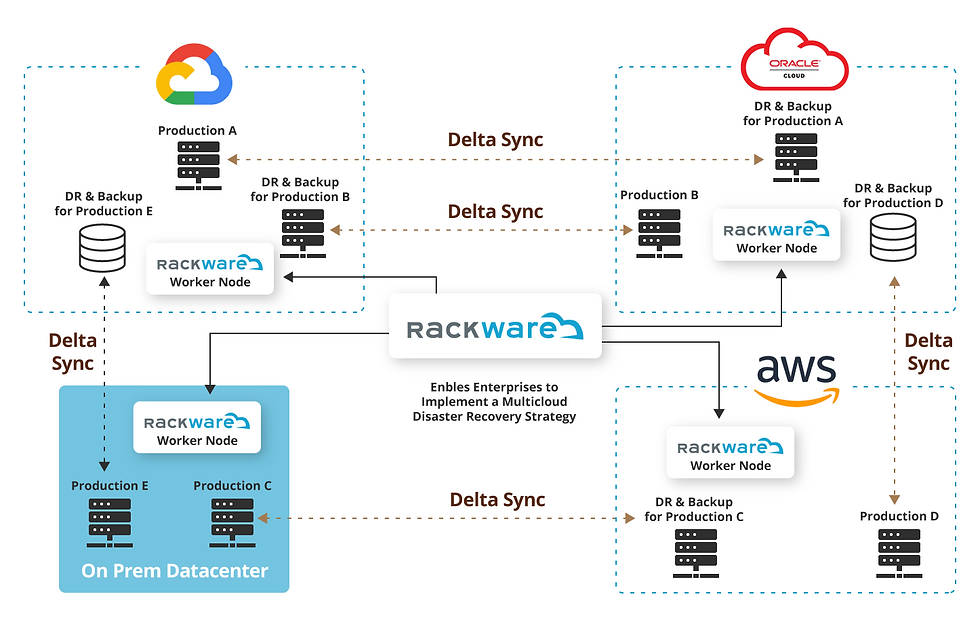Your Cloud Journey – Part 4: Disaster Recovery in the Modern Era
- nate6637
- Nov 6
- 3 min read
A New Era for Disaster Recovery
For many organizations, the words Disaster Recovery (DR) still conjure images of expensive duplicate datacenters, racks of idle servers, and tedious maintenance tasks. That legacy perception is rooted in a time when achieving business continuity meant replicating everything - hardware, networking, licenses, and storage - just to keep a standby site ready “in case.”
But that’s no longer the world we live in. Modern DR has been transformed by virtualization, cloud elasticity, and advanced replication technologies. Today, DR can be implemented with a fraction of the cost and complexity of traditional methods, with more effective protection, performance, or compliance.
Why Backup Alone Isn’t Enough
Backups remain essential, but they aren’t Disaster Recovery.
Backups protect data; DR protects business interests and operations.
Recovering large workloads from backup media can take weeks or even months, and often requires full provisioning and reconfiguration of infrastructure, networks, and dependencies before the business is operational. In contrast, DR solutions replicate live systems and continuously update them, allowing rapid failover to a ready-to-run environment.
Without a true DR plan, organizations risk long outages, lost revenue, and reputational damage even though “their data is safe.” The reality is that business continuity depends on bringing everything back online in a functional state, not just restoring files.
Beyond Databases: The Full Application Stack
Modern disaster recovery must protect more than databases. Applications today are distributed across app servers, web servers, load balancers, and management systems that all interact to deliver services. Ironically, a DR strategy that only covers the databases leaves them unusable without an ad hoc, time consuming process to restore the remaining application ecosystem.
A modern approach replicates the entire application stack -infrastructure, configurations, connectivity, and state -so that in a failover scenario the entire business service can resume seamlessly.
Understanding Threats and Geographic Risk
Although it is rarely evaluated as part of the process, the right DR design begins with risk awareness. Knowing what you’re protecting against determines where and how far away your DR site should be. For example:
Earthquakes (West Coast U.S.) – Place your DR site at least 150 km from your production environment.
Hurricanes (Southeastern U.S.) – Distance should be at least 300 km to avoid correlated weather impact.
These distances aren’t arbitrary, they’re based on observed patterns of regional disruption and infrastructure interdependence. A well-positioned DR site balances risk mitigation with power availability, network performance and personnel to enact the failover.
Hybrid Cloud Design for DR
A properly designed Hybrid Cloud - a blend of on-prem datacenter, on-prem private cloud, and one or more public clouds - naturally lends itself to strong DR capabilities. Each environment can serve as a failover target for the others, providing flexibility and cost efficiency.
By integrating DR into your Hybrid Cloud architecture from the outset, you can reduce redundancy, leverage existing resources, and simplify orchestration across environments.
The Rise of Multi-Cloud DR
Recent large-scale outages have shown that even cloud provider regions can fail, even without external forces of nature, sometimes cascading across nearby regions. Regulators have taken notice, and cross-cloud recovery(the ability to recover workloads from one cloud provider to another) is increasingly becoming a best practice or even a requirement.
Relevant frameworks now emphasizing operational resilience include:
DORA – Digital Operational Resilience Act (EU)
OCC – Office of the Comptroller of the Currency (US)
FFIEC – Federal Financial Institutions Examination Council
ISO 22301 – Business Continuity Management
EBA Guidelines on Outsourcing – European Banking Authority
Organizations aiming for compliance and true resilience must design DR strategies that span clouds and regions.

Choosing the Right DR Solution
Selecting the right disaster recovery solution involves ensuring mobility across all your environments with policy flexibility and automation. A good DR solution should provide:
Cross-region and cross-environment mobility to meet evolving requirements.
Policy driven replication and granular delta synchronization for efficiency.
Automated failover and fallback that are equally seamless and reliable.
Easy, non-disruptive DR testing, enabling continuous validation and training so there are no surprises when it counts most.
Automation is the key. Failover must be simple, fast, and predictable, and fallback must be just as automated to return to the primary site once it’s restored.
RackWare and Modern DR
RackWare’s platform delivers the automation and flexibility required for modern DR, seamlessly supporting hybrid and multi-cloud environments. RackWare is application and hypervisor agnostic, even supporting in-memory applications and databases. It supports the necessary options and requirements avoiding additional one-off, expensive solutions. DR testing is quick and non-disruptive, giving organizations the agility and confidence to maintain true business continuity.
RackWare turns what was once complex and costly into a manageable, policy-driven process - an essential next step on your Cloud Journey.



Comments